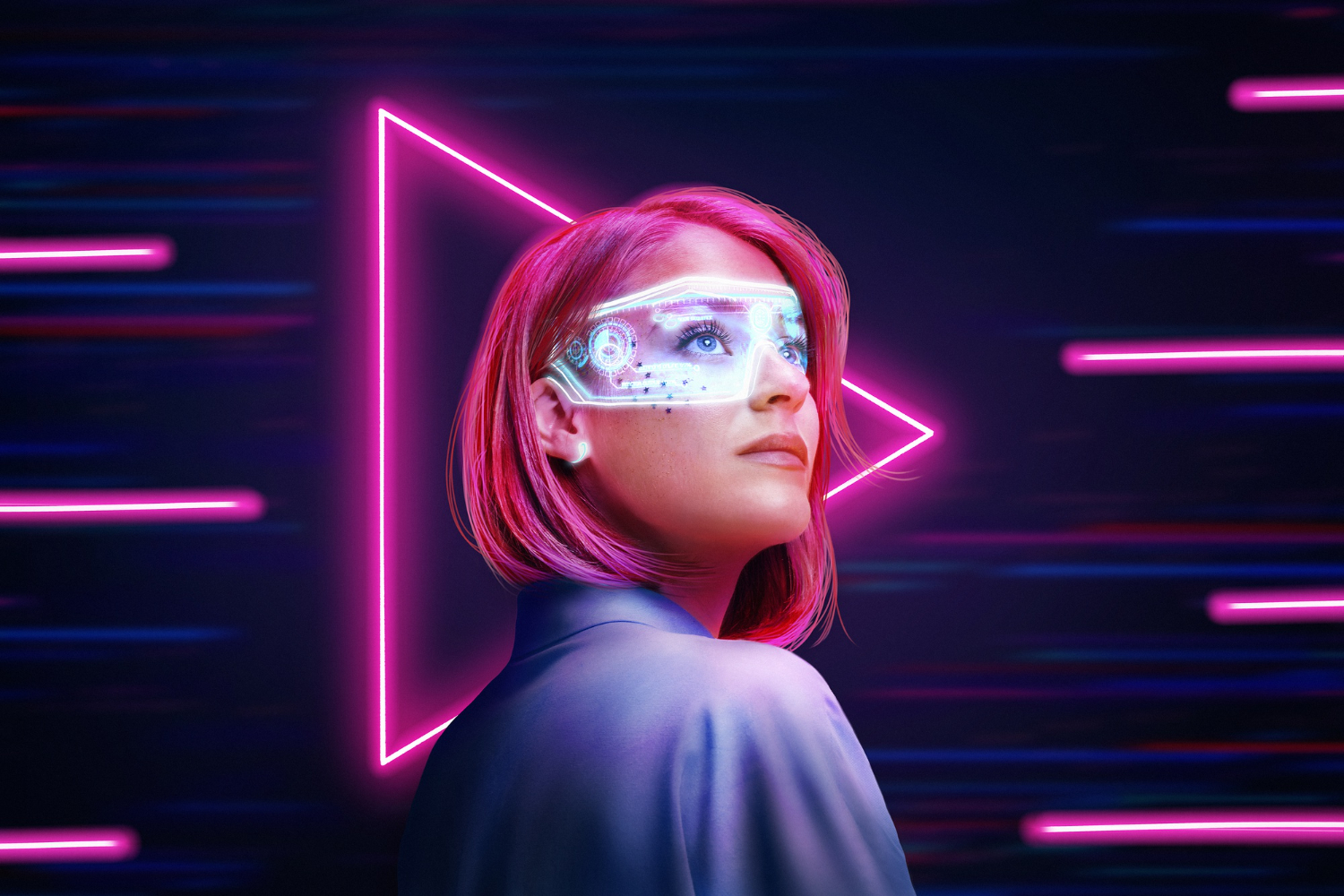The modeling world is no stranger to evolution. From runway supermodels dominating the 90s to Instagram models revolutionizing the 2010s, change has been constant. Today, a new frontier is rapidly emerging: virtual and AI-generated models. These synthetic personas, crafted entirely through code, CGI, and machine learning, are not only disrupting traditional modeling norms but reshaping the very concept of what a “model” is. As technology continues to develop at breakneck speed, it’s becoming increasingly clear that the future of modeling might not always involve flesh and blood.
What Are Virtual and AI Models?
Virtual models are computer-generated avatars created with advanced 3D modeling software and often enhanced with AI. They can be photorealistic or stylized, and many are managed by creative teams or digital agencies. These models have profiles, post regularly on social media, and even secure fashion campaigns. Unlike traditional models, they don’t age, require physical maintenance, or have scheduling conflicts. AI models, on the other hand, are often generated using artificial intelligence algorithms that can produce entirely synthetic faces and bodies, mimicking human features to uncanny levels of realism.
The most notable examples include Lil Miquela, Shudu, and Imma, digital personalities who have garnered millions of followers and collaborated with top-tier fashion houses like Prada, Balenciaga, and Dior. Their rise signals a paradigm shift in how the fashion and advertising industries perceive identity, branding, and representation.
Why Are Brands Embracing Digital Models?
Brands are always looking for new ways to innovate and stand out. Virtual models offer a unique opportunity to blend art, technology, and marketing into one seamless experience. Here are a few reasons why many brands are opting for digital faces:
Total Control Over the Image
Virtual models don’t blink during shoots, have bad skin days, or change their hair without notice. Brands can control every detail, from pose to outfit to lighting, resulting in perfect, highly curated visual content. This level of creative precision is appealing for luxury labels that value aesthetic consistency.
Cost Efficiency in the Long Term
Although initial development costs for a virtual model can be high, ongoing expenses are relatively low. There are no travel fees, agency commissions, or day rates. A virtual model can be deployed in any environment, desert, underwater, or space, without ever leaving the server room.
Global Accessibility and Timelessness
Digital models never age or get tired. They can be active 24/7, catering to a global audience in multiple time zones. This makes them ideal for social media marketing, especially on platforms like Instagram, TikTok, and YouTube, where engagement thrives on constant content.
How Virtual Models Are Influencing Real Ones
Rather than replacing human models, virtual and AI models are shaping the way real models are perceived and hired. Here’s how:
Upping the Digital Game
Modern models are now expected to have strong digital presences. Maintaining an engaging Instagram feed, understanding TikTok trends, and being media-savvy are part of the job. As virtual models dominate digital platforms, real-life models must enhance their online brands to stay competitive.
Cross-Collaboration and Inspiration
Some human models are working with virtual models in campaigns, blurring the lines between fantasy and reality. In turn, virtual models are being styled, posed, and even animated based on real human counterparts, drawing from their expressions, attitudes, and body movements. There’s a loop of inspiration developing between the digital and the real.
Redefining Beauty Standards
One notable impact of AI-generated models is the challenge they pose to traditional beauty standards. Virtual models can be created with any skin tone, body type, or facial structure, freeing creators from societal constraints and encouraging a broader, more inclusive aesthetic.
The Tech Behind the Trend
Creating a successful virtual model requires a mix of artistic and technological expertise. The process often includes:
- 3D Modeling & Rendering: Digital sculptors use programs like Blender, Maya, and Unreal Engine to create realistic textures, movements, and expressions.
- Motion Capture Technology: Some virtual models are animated with motion capture, allowing them to walk, talk, and move like real humans.
- AI and Machine Learning: Advanced AI helps generate facial features, voice, personality traits, and even content strategies based on user data and social trends.
The integration of these technologies enables virtual models to evolve rapidly, adjusting to fashion cycles and cultural conversations in real-time.
Ethical Questions and Industry Concerns
The rise of virtual and AI models also introduces complex ethical dilemmas:
Job Displacement
There’s concern among professional models and photographers that digital alternatives may take away paid opportunities. If brands begin replacing human talent with CGI counterparts, this could negatively impact livelihoods across the industry.
Body Image and Unrealistic Expectations
Virtual models can be shaped to physical perfection, leading to worries that they may set unattainable beauty standards. While many brands use these models creatively, others may inadvertently reinforce harmful ideals about bodies, skin, and appearance.
Authenticity and Transparency
Audiences value authenticity, especially on platforms like Instagram and TikTok. When users discover that an influencer or model is entirely artificial, it can lead to backlash. Transparency about what’s real and what’s not will be essential as virtual models become more common.
The Rise of Hybrid Models
One interesting trend is the development of hybrid models, real people augmented with virtual enhancements. For example, a model might shoot on a green screen and later be placed in a fantastical digital setting. Or a human face might be swapped with an AI-generated face for a campaign. These hybrid approaches give creators the best of both worlds: authentic human emotion and digital flexibility.
Fashion shows are also experimenting with augmented reality (AR) and virtual reality (VR) to showcase collections. Brands are increasingly using avatars to “walk” virtual runways that can be watched online. This not only expands access to fashion weeks but reduces the industry’s carbon footprint.
How Aspiring Models Can Adapt
The emergence of virtual models doesn’t mean aspiring human models are obsolete. In fact, there are several ways to stay competitive and relevant:
Build a Strong Digital Identity
Your Instagram, TikTok, and other social platforms are essentially your portfolio. Showcase not just modeling shots but your personality, behind-the-scenes moments, and lifestyle. Brands want to work with individuals who have a compelling online presence.
Be Open to Tech Collaborations
Learn about digital tools, AR filters, and even AI-enhanced photo editing. Partner with photographers who are experimenting with virtual techniques. The more digitally versatile you are, the more opportunities you’ll access.
Embrace Your Humanity
While virtual models offer precision, they can’t replicate the full range of human emotion, spontaneity, and depth. Your individuality, story, and charisma are still powerful assets. Don’t underestimate how much value you bring just by being real.
Stay Informed
Keep up with the evolution of technology in fashion. Follow the work of digital artists, creative tech startups, and virtual influencers. The more you understand the landscape, the better you can navigate it.
What Lies Ahead?
The future of modeling is likely to include a blend of human, virtual, and AI-generated talent working together. We’ll see more creative campaigns featuring both traditional models and digital ones, more brand experiments in the metaverse, and increasing use of NFTs (non-fungible tokens) to represent ownership of model-generated content.
AI tools might also become a staple in scouting and casting. Agencies could use machine learning algorithms to identify promising talent based on symmetry, style, and digital engagement. Virtual fitting rooms, digital try-ons, and avatar-based shopping experiences are also becoming the norm, requiring models to be more digitally present than ever before.
In time, models may be asked to create digital twins, virtual versions of themselves that can attend events, star in ads, and interact with fans around the clock. This opens up exciting, if uncharted, territory for monetization and exposure.
Final Thoughts
The rise of virtual and AI models is not just a fleeting trend, it’s a cultural and technological shift that’s transforming the modeling industry from the ground up. While it introduces new challenges, it also offers unprecedented opportunities for creativity, inclusion, and global reach.
For models, photographers, agencies, and brands alike, embracing this change will be essential. Those who can adapt, learn, and evolve alongside technology will not only survive, they’ll thrive. Whether you’re walking a physical runway or uploading content to a virtual platform, the essence of modeling remains the same: storytelling through style, expression, and presence, even if that presence is pixelated.

